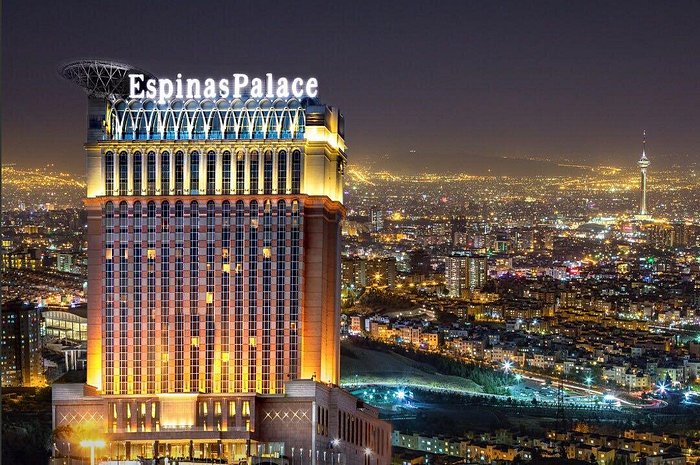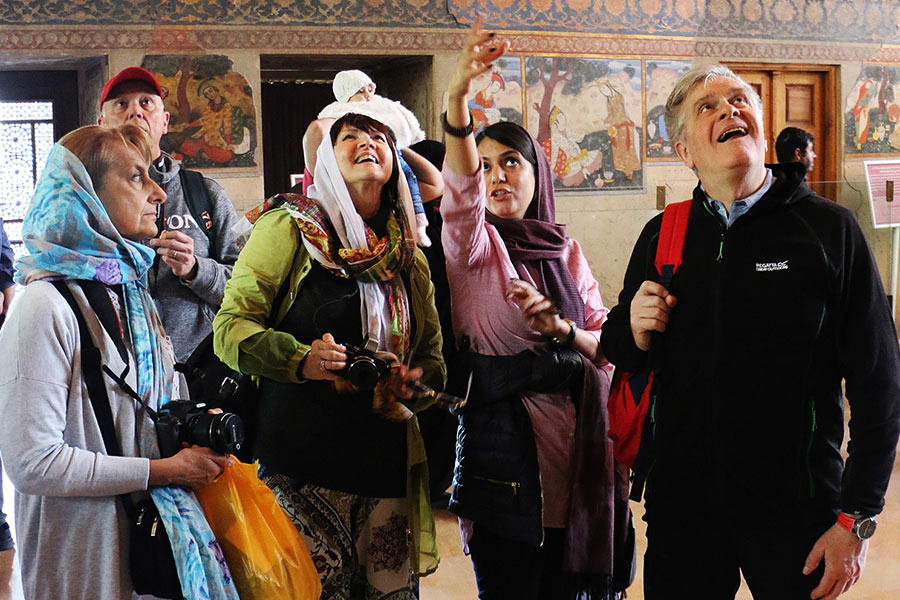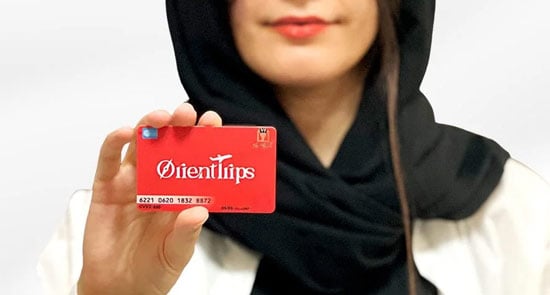Top 16 Places To See In Tehran
A journey Into the Lavish History and Architectural Wonders of Iran's Capital

Whether you’re a seasoned traveler or simply looking to explore new destinations, this comprehensive guide will provide you with valuable insights into the must-visit attractions in Iran’s vibrant capital city. From historical sites to architectural marvels, cultural centers to natural wonders, Tehran offers a diverse range of experiences that will leave you captivated. Join us on this virtual journey as we uncover the beauty and splendor of Tehran’s top 16 places to see.
Contents
1. Golestan Palace
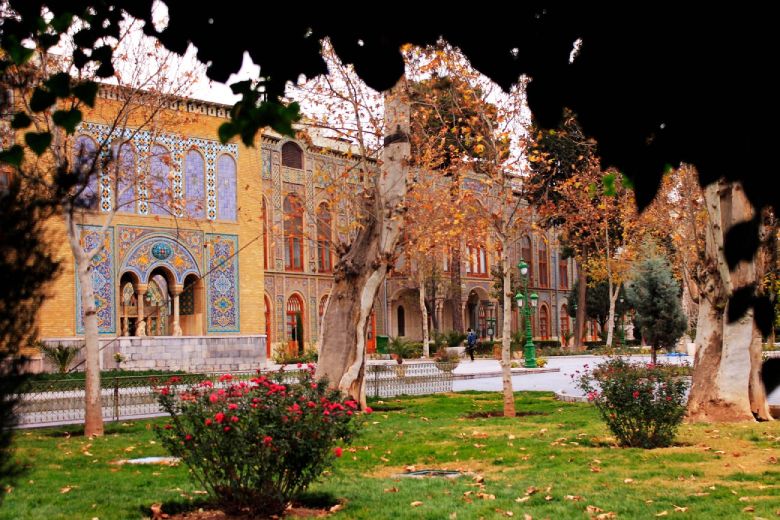
Golestan Palace stands out as a significant historical landmark in Tehran. Originally established in the era of Shah Abbas Safavi, the palace has evolved extensively over the centuries. Today, its initial structure is completely transformed, showcasing the architectural progress and historical shifts of Iran.
Boasting a history that spans over four centuries, Golestan Palace has been a silent witness to numerous dynastic changes. It has seen the rise and fall of various periods, including the Safavid, Qajar, Zandiye, and Pahlavi. This palace, with its rich past, tells the story of 10 distinct historical eras.
The coronation of Agha Mohammad Khan Qajar as the king of Iran marks a pivotal moment in Golestan Palace’s history, elevating it to the status of a royal citadel. This iconic palace bore witness to the coronation ceremonies of Ahmad Shah, Muzaffaruddin Shah, and Reza Shah, each reign bringing its own set of transformations to the palace’s structure.
Throughout its history, Golestan Palace has seen significant additions and renovations. Various sections, including the interior, government support, and the exit building, have undergone complete reconstruction or demolition for diverse reasons. The palace’s architecture uniquely blends Iranian and European styles, significantly influencing the era’s building designs.
Golestan Palace stands as a living testament to Iran’s rich history, akin to a cherished elderly figure full of stories and wisdom. It has been aptly named the “Eyes and Ears of Iran’s History,” serving as a custodian of crucial historical events. Beyond its historical significance, the palace holds immense artistic and architectural value.
In 1392, Golestan Palace earned its place as a UNESCO World Heritage Site. The palace complex includes various sections such as the Marble Throne Mansion, Berlian Hall, Nagarkhane Museum, and Shams-ul-Amara Mansion. In the following sections of this article, we will introduce each of these fascinating parts in detail.

Visiting hours of Golestan Palace
- Spring and summer: from 9:30 a.m. to 6:30 p.m.
- Autumn and winter: from 9:00 a.m. to 5:00 p.m.
- Keep in mind that visiting different parts of the palace takes at least two hours.
Golestan Palace ticket price
There are separate tickets for visiting different parts of Golestan Palace, and visitors can purchase tickets based on their preferred locations. The entrance fee to Golestan Palace is 50,000 Rials for Iranian visitors and 500,000 Rials for foreign visitors in the year 1400.
The ticket price for entry to each museum and palace building is 40,000 Rials for domestic visitors and 300,000 Rials for foreign visitors. It’s important to note that admission to Khlot Karimkhani, Zarov Hall, and Berlian Hall is free.
Please be aware that the cost of visiting the main part of the palace, which includes the gallery museum, special museum, and special palace, is 130,000 Rials for Iranian citizens and 1,100,000 Rials for foreigners.
Address and Access to Golestan Palace
The most convenient way to reach Golestan Palace is by using the 15 Khordad or Imam Khomeini Square metro stations. Additionally, there is a single-line bus route to Imam Khomeini Square and Qurkhaneh that provides access to this sightseeing location. Vehicle traffic is allowed in the streets leading to the palace.
Address of Golestan Palace: Tehran, Panzdeh Khordad St., north side of Arg Square, Golestan Palace
Phone: +982133956662
Abyad Palace or Museum of Anthropology

Abyez Palace was added to Golestan Palace by the order and design of Naser al-Din Shah to accommodate gifts sent by the Ottoman kings. It incorporates European architecture, featuring a completely white facade and marble stairs, which earned it the name “white.”
In 1314 A.H., Abyez Palace was transformed into an anthropology museum by the decree of Reza Shah Pahlavi. To establish the museum, experts collected objects and artifacts related to people’s lives from various regions of Iran, aiming to create a museum rich in the cultural diversity of the country.
The Museum of Anthropology is divided into two floors. The ground floor houses the administrative department and exhibition halls, while the first floor showcases various types of clothing from different regions of Iran, including common attire from the Qajar period, along with unique and spectacular artifacts.
The Museum of Anthropology’s entrance fee is 40,000 Rials for domestic visitors and 500,000 Rials for foreign visitors.
BOOK ONLINE
Tehran Hotels
Marble bed porch or Daralamare porch

Ivan Takht Marmar is the oldest building in Golestan Palace, dating back to the era of Karim Khan Zand. It stands as one of the most exquisite structures among the palaces of Tehran. In the past, Ivan Takht Marmar was the venue for hosting significant ceremonies, including coronations, and it has evolved over the years. During the Qajar period, following the conquest of Shiraz, several important elements, such as two marble columns, two inlaid doors, and marble ornaments, were transported from Shiraz to adorn this porch.
Ivan Shahi is the central component of Dar al-Amara, where ceremonial events took place. Architecturally, this porch is regarded as a masterpiece, adorned with paintings and mirrors that were gifted by the kings of France and Russia.
The admission fee for Ivan Daralamare is 40,000 Rials for domestic visitors and 500,000 Rials for foreign visitors.
Marble bed

The marble bed is a remarkable piece of art situated in the form of a platform within the porch of Dar al-Amara. Inspired by the throne of Hazrat Suleiman and commissioned by Fath Ali Shah, this throne was meticulously designed by the master Mirza Babai Shirazi, a painter at the Qajar court, using the finest marble sourced from the quarries of Yazd. It was crafted by the great artists of the time, including skilled sculptors.
Speaking of the captivating aesthetics of this artwork, the marble bed stands at a height of one meter and is supported by two demons and six angels or humans, all exquisitely sculpted. The bed consists of two steps, with two lions flanking the first step and a dragon next to the second.
Since the marble bed is situated in Dalamare’s porch, you can view this masterpiece by purchasing a ticket for the porch.
Hello hall

Salam Hall, also known as Museum Hall or Special Museum among Tehran’s palaces, is a room constructed within Golestan Palace in the year 1253 AH. The architect responsible for this building was Haj Abulhasan, a modern architect acclaimed as Sani al-Mulki due to his artistic contributions and efforts.
This hall underwent significant alterations during the coronation period of Mohammad Reza Pahlavi. Most of the intricate mirrorwork and plasterwork that you can admire within the hall date back to the Pahlavi era. Salam Hall boasts 9 large windows that open up to the Golestan garden.
The museum hall houses exquisite artworks from the Qajar era, often presented as gifts from other kings or accomplished artists. Within the gallery section of the museum, you’ll find important pieces of art, including paintings by notable figures such as Kamal al-Molk and Master Mahmoud Khan Saba.
The admission fee for Salam Hall is 40,000 Rials for domestic visitors and 500,000 Rials for foreign visitors.
Hall of Mirrors

The Hall of Mirrors is situated to the west of the Hall of Salam. Its construction was completed in 1294 AH, but the plasterwork and mirror installations continued until 1299 AH. The primary highlight of this hall is the remarkable painting by the talented Iranian artist, Kamal al-Molk. It took approximately 5 years to complete this painting within the Hall of Mirrors, and it includes a depiction of Naseruddin Shah within the hall.
What makes the Hall of Mirrors truly remarkable is that, upon viewing Kamalul Molk’s painting, you envision a vast and expansive image of the hall in your mind, even though the actual space is relatively small.
The admission fee for the Aine Hall (Hall of Mirrors) is 40,000 Rials for domestic visitors and 50,000 Rials for foreign visitors.
Dining hall

The Dining Hall, alternatively known as the Ivory Hall or Aaj, holds a significant place within the main structure of Golestan Palace. While the exact construction date of this building remains uncertain, evidence suggests that the Ivory Hall predates the construction of the Hall of Salam and the Mirror Hall.
One of the hall’s notable attractions is the painting by Mahmoud Khan Malik al-Shaara, depicting the exterior of the building in 1286 A.H. This artwork offers a glimpse into the original form and appearance of the hall before the alterations and renovations made during Naseruddin Shah’s reign.
Ivory Hall or today?
The name of the Ivory Hall carries various interpretations. Some attribute it to the presence of two elephant tusks within the hall’s current setup. Others suggest an alternative explanation, associating it with the Turkish word “aj,” which translates to “hungry.” According to this perspective, the hall served as a place for receptions and dining.
The admission fee for the Ivory Hall is 40,000 Rials for domestic visitors and 500,000 Rials for foreign visitors.
Brilliant Hall

Visiting the Berlian Hall, like many other palaces in Tehran, offers a journey back in time spanning hundreds of years. The Brilliant Hall is among the mirrored halls within Golestan Palace, occupying the location of the former Bloor Palace. Unfortunately, not much information remains about the Bloor Palace, as during Naser al-Din Shah’s era, old buildings were often demolished to make way for new ones. Berlian Palace was constructed on the same foundation as the original Bloor Palace.
Due to its historical evolution, the Berlian Hall may not be on the same level as some of the other halls. However, it was restored during the reign of Muzaffaruddin Shah, and the changes made during the restoration significantly enhanced its appearance and splendor.
The best part is that visiting the Brilliant Hall is free, allowing you to explore its historical richness without an admission fee.
Shamsolemareh

Shams-ul-Amara Mansion stands as the most prominent structure within Golestan Palace. This five-story building soars to a height of 35 meters, making it the tallest edifice in Tehran during its time and a long-standing symbol of the city.
Shams-ul-Amara was commissioned by Naser al-Din Shah, inspired by the tall structures of Farangistan (Europe), in the year 1244 A.H. Its construction spanned three years, resulting in a building characterized by two symmetrical towers. The beauty of Shams-ul-Amara is widely acclaimed, with its mirror work, paintings, and plasterwork setting it apart from all the other halls in Golestan Palace.
The admission fee for Shams-ul-Amara is 40,000 Rials for domestic visitors and 500,000 Rials for foreign visitors. Please note that the upper floors of Shams-ul-Amara are not open for public visitation.
Diamond Hall

It is true that the name of Diamond Hall was chosen appropriately. A hall with unique mirror work, arches and arches with colored glass, should not have a name other than Diamond Hall. The Diamond Palace of Golestan was built during the reign of Fath Ali Shah, but its appearance and decorations changed during the reign of Naseruddin Shah.
This building includes a large hall, earring rooms, vestibule, upper room and many vestibules. There is also a large basement under the hall.
Diamond Hall ticket is 40,000 Rials for domestic visitors and 500,000 Rials for foreign visitors.
Windy mansion

Badgir Mansion is one of the mansions of Golestan Palace, which was built during the reign of Feth Ali Shah. The mansion underwent many changes during the era of Naseruddin Shah until it became the present day. The reason for the name of this building is its high windbreak. The royal hall is the main part of this mansion, which has 9 beautiful sashes, seven-color mosaic floors, painted plaster columns and marble plinths, which captivates every visitor.
Under the hall, there is a large pond, which was used as a summer room in the past due to proper air circulation. This pond has now been turned into a photography museum. This museum has exhibited a collection of photos from the Qajar period along with specialized old photography equipment.
Badgir mansion and photo museum tickets must be purchased separately. Its cost is 40,000 Rials for domestic visitors and 500,000 Rials for foreign visitors.
Hoz Kholot Karimkhani, cozy corner of Naseruddin Shah

Karimkhani’s retreat in Golestan Palace is a covered building with a three-door porch and a boiling pool that was filled with water from the royal aqueduct and flowed into the garden. There are two main reasons for naming this building, which is an interesting story. The first reason is the construction time, which goes back to the era of Karim Khan Zand, and the second reason is the oppression of Agha Mohammad Khan Qajar against the bones of Karim Khan Zand.
Agha Mohammad Khan ordered Karim Khan’s bones to be transported from Shiraz to Tehran, then they were buried under the stairs that were his daily commute so that he would pass over it every day. After the extinction of the Qajar dynasty, Pahlavi ordered to split the stairs and took out the bones from there.
With the changes made by Naseruddin Shah, Karimkhani’s solitude had become a clean and calm space, where he would occasionally rest in its cozy corner. Currently, the prominent works in this building are the tombstone of Naseruddin Shah and the throne of Fath Ali Shah.
Visiting Karimkhani’s solitude is free.
2. Saadabad Palace

Saad Abad Palace is one of the most important palaces in Tehran, which was built in the Qajar era with an area of about 110 hectares at the foot of Tochal Mountain. Saad Abad Palace had a cool climate due to its location on the slopes of Alborz Mountain and was the summer residence of Qajar and Pahlavi kings.
During the Pahlavi era, by purchasing the gardens around the palace and building new buildings combining European architecture and traditional Iranian architecture, the size of the palace increased and underwent fundamental changes. Saadabad has 18 palaces, each of which belonged to a member of the Pahlavi family in the past. In the rest of the article, we will introduce you to the important palaces of this magnificent historical cultural complex.
Visiting hours of Saadabad Palace
- Spring and summer: from 9:00 to 18:45 (ticket sales until 17:00)
- Autumn and winter: from 9:00 a.m. to 5:00 p.m. (Ticket sales are made until 4:00 p.m.)
Saadabad Palace ticket price
The entrance fee to Saadabad Palace is 5,000 Tomans for Iranian tourists and 100,000 Tomans for foreign tourists.
Visiting the palace and various museums requires a separate ticket. In general, the ticket price for visiting museums is 4,000 Tomans for Iranian visitors and 50,000 Tomans for foreign visitors.
There are exceptions in the ticket price of some palaces, visiting the Mellat Palace, the Green Museum Palace is 5,000 Tomans for Iranians and 100,000 Tomans for foreigners.
Address and Access to Saadabad Palace
Access to this complex is possible by subway, private car and fast bus. By metro, it is enough to take line one of the Tehran metro and get off at Tajrish square station. Then take Asif or Darband taxis to get off near one of the doors of the complex.
If you use the BRT bus, you should board the line that passes Tajrish Square and travel the rest of the way as described above. If you are using a private car, you should know that Saadabad Palace does not have a parking lot and the entrance door of Zafaranieh has more parking space than other doors.
- Address of Saadabad Palace: Wali Asr St., Shahid Falahi St. (Zaafraniyeh), at the end of Shahid Kamal Taheri St
- Phone: +982127940378
Ahmed Shah Palace
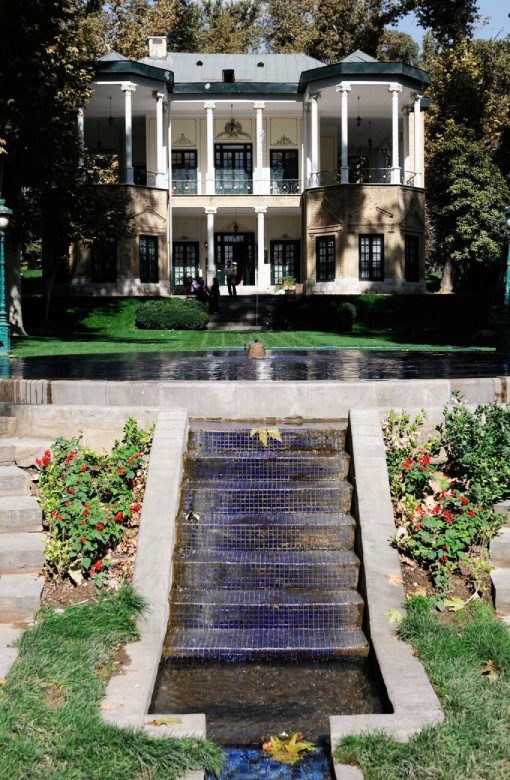
Ahmad Shah Palace is considered one of the oldest palaces in Saad Abad, among the sights of Tehran , which is attributed to Ahmad Shah Qajar. The construction of the palace began during the reign of Ahmad Shah in 1297 and was completed during the reign of Reza Shah.
Since the beginning of the revolution, this palace was the training barracks of Basij Sisters, which was again recognized as a part of the Saad Abad complex in 2013. It was decided that the doors of Ahmad Shah’s palace will be opened to visitors after restoration.
Bahman Palace

The building or Bahman Palace is one of the palaces built during the Pahlavi era and it was the residence of Bahman, the son of Gholamreza Pahlavi. This palace has a brick facade and a gable roof and is visible in the middle of Saad Abad garden. Bahman Palace has had different uses in different eras, but currently it is the museum’s management office.
Dedicated palace
The exclusive palace used to be a natural history museum. Currently, it has changed its use to the presidential institution. It is not possible to visit the private palace because of its use.
Queen Mother’s Palace (President’s Palace)
Before his exile, Reza Shah spent the last years of his life in the palace of the Queen Mother, and this palace was the residence of Tajul Muluk until the Islamic Revolution. She was the mother of the king. The Queen’s Palace is currently known as the building or President’s Palace and is the residence of special government guests. Visiting and entering the Queen Mother Palace is not possible.
Green Palace

Green Palace, which was originally called Shahvand Palace, is one of the most beautiful palaces in Tehran and Iran. This palace was originally a half-finished building belonging to Ali Khan, which Reza Shah bought and ordered his royal palace to be built there. It took seven years to complete and build, and finally a two-story palace, including the ground floor and basement, was built.
The interior of the Green Palace is full of plasterwork, mirrorwork and inlays that distract every visitor from the moment they arrive. The use of rare green stones extracted from Khamse Zanjan mines and Khorasan marbles in the facade of the building has made it different and more beautiful than other palaces. After the revolution, the name of the palace was changed to the Green Palace.
One of the special features of the Green Palace is the Hall of Mirrors, which was Reza Shah’s office. This hall is completely mirrored and the mirrors are decorated with small plaster flowers. The wonder of Aineh Hall is the coordination of Mashhad’s 70-meter long design with the roof design of the hall.
White House or National Museum Palace

We are going to introduce the biggest palace in Saadabad. The White House deserves this name because of its white facade. Another name of this palace is Mellat Palace and it competes with Milad Tower in fame. This palace was built in 1310 A.H. by order of Reza Shah in the style of Iranian-Roman architecture with 54 units and 10 ceremonial halls, and it took five years to build. The White Palace was a space for Pahlavi’s ceremonial and administrative affairs and the residence of Mohammad Reza Shah and his wife Farah.
Among the spectacular features of the White House, we should mention the plasterwork of the interior of the foyer and unique marble floors, chandeliers and lamps, crystals from the Qajar era, a collection of Iranian pottery from the 4th millennium, exquisite palace carpets and a desk belonging to Marie Antoinette, Queen of France.
It can be said that one of the most attractive works in the White House is the oil painting curtains painted on the theme of Shahnameh by the great master Hossein Behzad.
3. Niavaran palace

Niavaran Palace is close to many villages around Tehran from the north. This palace is one of the most spectacular palaces in Tehran that attracts many tourists. This palace with an area of nearly 11 hectares, in the north of Tehran, was built as a summer residence by order of Fath Ali Shah. The reason and origin of its name is because of the reeds on which the palace was built. Nizar became Niavaran, which later became known as Niavaran.
During the Pahlavi era, many small palaces of the complex were destroyed and modern and new buildings were replaced by the order of different kings. After the Islamic Revolution, the palace was reopened in 1365 and over the years, different parts of the complex were exposed to everyone.
If you plan to visit Tehran’s sights, don’t miss the beautiful nature of Niavaran Palace and tall and old trees. There is a coffee shop in this palace for people who want to drink tea or coffee in the cool air of the garden.
Visiting hours of Niavaran Palace
- Spring and summer: from 9:00 to 19:00
- Autumn and winter: from 8:00 to 17:00
Niavaran Palace ticket price
To visit different parts of the palace, you need to buy tickets separately. The entrance fee of the Niavaran Palace Museum and visiting the exclusive palace is 5,000 Tomans for Iranian visitors and 100,000 Tomans for foreign visitors.
The ticket price of Jahannama Museum, Ahmadshahi Kush, dedicated library museum is 4,000 Tomans for Iranian visitors and 50,000 Tomans for foreign visitors.
Sahibqraniye Palace and Hozkhaneh Museum are closed until further notice. Also, after this palace, you can include visiting Gol Mahalati market in your plan.
Address and Access to Niavaran Palace
It is possible to reach Niavaran Palace by subway, express bus, private car or taxi. If you use the metro to go to the palace, just take Tehran metro line 1 and get off at Tajrish Square station. Then take Dezashib or Niavaran taxis to Niavaran Palace.
If you are using the BRT bus, it is enough to take the train line bus – Tajrish and continue the rest of the way with the bus from Azgol, Darabad or Resalat Square to the door of the palace.
- Address: Tehran, Shahid Bahonar Square (Niavaran), historical cultural complex of Niavaran
- Phone: +982122282012
Niavaran Palace Car Museum

Niavaran Palace Car Museum is not a specialized car museum. In the past, this museum was a garage for the Pahlavi family’s cars, which has now become a museum. This museum has started its activity with the aim of protecting and introducing old cars.
Among the cars in this museum are low-speed electronic golf cars, Rolls Royce Shah, or Pahlavi’s children’s motorcycles.
Dedicated Library

The private library, which was known as Farah Pahlavi’s private library in the past, is a building that was built in 1355 on two floors with a basement. The combination of glass and mirror of the library was designed by an American artist, which was implemented by Iranian artist architects.
This library contains 23,000 books and 16,000 titles in all fields in Persian and foreign languages, books related to Iranian history, French literature, and the art of painting are the richest fields in the dedicated library. If you are a book lover, manuscripts, first edition books, and books donated by heads of foreign countries will definitely suit your mood.
The organization of the dedicated library was started in 2001 by a team of experts and its cataloging was completed after two years.
Saheb Qaranieh Palace is one of Tehran’s palaces

It may be interesting to know that Saheb Qaranieh Palace is the filming location of the bitter coffee series, Shahzdeh Ehtjab, Delshdegan and Kamalul Molk movies. This palace was built in 1229 A.H. by the order of Naser al-Din Shah Qajar, which included a dormitory, an interior and a harem. During the Pahlavi era, for the wedding ceremony of Mohammad Reza Pahlavi and Fawzia, the decoration and furniture of Sahibqraniye Palace were changed.
After the Islamic revolution, the palace was renovated in 1374 and turned into a museum with its decorations, ornaments and valuables. This museum is currently under renovation and it is not possible to visit it.
Kushk Ahmad Shahi

Ahmad Shahi Palace or Kushk is one of the oldest buildings of Saadabad Palace, which got its name because of Ahmad Shah’s summer residence during the Qajar era. During the Pahlavi era, it was the residence of Mohammad Reza Shah and Reza Pahlavi. Ahmadshahi Kushk is a two-story building with a patterned brick facade, designed and decorated in the style of European architecture.
In the middle of the foyer of the first floor, there is a marble pool, and the central hall of the second floor is used as a music hall.
Currently, exquisite and valuable objects made of bronze, silver, etc., along with painting panels, medals and badges, and the personal collection of Reza Pahlavi are exhibited in this building.
Jahannama Museum, the whole world in hand

If you visit this museum, you will understand the reason for its name at the first glance. A museum where all the works of art donated or bought by the Pahlavi family are collected.
The old works in the Jahannama Museum are classified into two parts: prehistoric art and visual works of contemporary artists of Iran and the world. In this museum, works of art and historical objects from the time of ancient Egypt to the paintings of the great men of the 20th century are gathered together.
Garden of Inscriptions

The Garden of Inscriptions is an exhibition in the open space of Niavaran Garden, where molded examples (molage) of rock inscriptions from the Median, Assyrian, Aramaic, Parthian, Sasanian and Elamite eras are placed. People who are interested in linguistics and archeology from the past to the present will definitely enjoy visiting the Garden of Inscriptions. This space was opened in 2007.
Hozkhaneh Museum
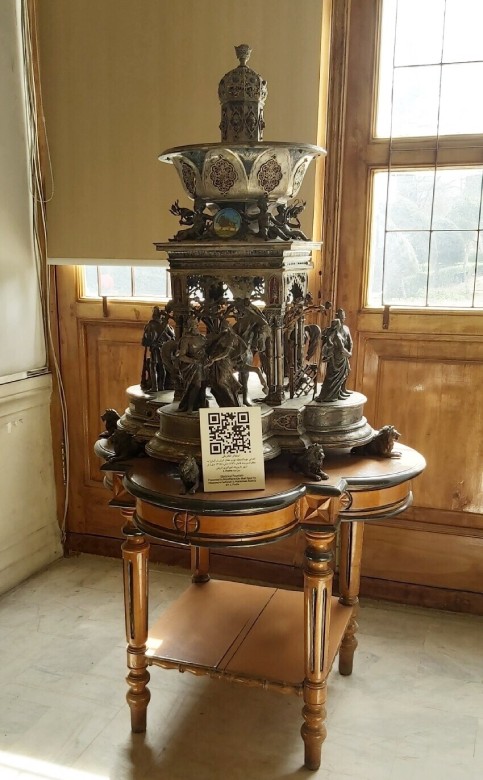
The lower floor of Sahibqaranieh Palace is known as Hozkhaneh Museum. This museum is a collection of works and objects related to the Qajar era, such as covers, pencils, calligraphy works, paintings, etc. Hozkhaneh Museum is a large pond in the middle of the building surrounded by sofas and has a part as a tea room where old crystal dishes and serving utensils are displayed.
4. Yaqut Palace

Yakut Palace is one of Tehran’s palaces, which was built in 1262 A.H., during the era of Naser al-Din Shah, in the Sarkheh Hisar area of Tehran. This palace had two sections, outer pavilion and harem, which had about 200 rooms. In terms of architecture, Yakut Palace was built in accordance with European architectural standards, and there is no Iranian architecture in its construction.
Over the years, the use of this palace has been changed to a hospital and now it is called Dr. Lavasani Hospital and Superspeciality Heart Center.
- Address of Yaqut Palace: Tehran, at the end of Hemet Sharq highway, first of Abali road, Shahid Lavasani hospital
5. Ishratabad Palace (Kolafarangi Palace)

Ishratabad Palace was built in the east of Tehran and in the beautiful gardens of Ishratabad, by the order of Naser al-Din Shah Qajar. Kolafrangi mansion was a four-story building, and a place for the king’s summer residence and the life of his wives. During the Pahlavi era, the use of this palace was changed to Ishratabad barracks and prison, and it was one of the key places during the Islamic Revolution.
Due to the fact that Ishratabad Palace is currently used for military purposes, it is not possible to visit it for everyone. Of course, in the past years, there have been consultations about the restoration and opening of the doors of this palace to everyone.
6. Shahrbani Palace

Shahrbani Palace is one of Tehran’s palaces, which is located in Mashakh Square, or the National Garden. A palace in the heart of Tehran that maybe if your workplace is close to it, you will pass by it every day with surprise. This three-story palace was built in 1315 A.H. during the reign of Reza Shah Pahlavi. Its construction process took 5 years.
The architecture of Shahrbani Palace is known as Iranian neoclassical architecture, a combination of European architecture and symbols and standards of traditional Iranian architecture. The purpose of this type of architecture was to show the authority of the government.
This palace was purchased by the Ministry of Foreign Affairs in 1380 and was put into operation after the renovation. To see Shahrbani Palace, you can use a bus or Tehran metro and after getting off at Imam Khomeini station, you can reach it by walking for a few minutes.
- Address: Tehran, north side of Imam Khomeini St.
7. Baharestan Mansion

Baharestan Palace, which is also known as Iran’s National Council, is a palace that was built by order of Mirza Hossein Khan Sepehsalar as his residence. The architecture of the palace is a combination of European and Iranian architecture. Over the years, this mansion has been burned three times and bombed once and survived. The combination of its history and architectural art has made the building one of the sights of Tehran.
In the following years, this building was used as a place for the meetings of the National Assembly.
- Address: Baharestan Square, Baharestan Complex, Tehran
8. Mozafari Palace from the Palaces of Tehran

Mozafari Darabad Palace is one of Tehran’s palaces, which is currently located in the grounds of Dr. Masih Deneshvari Hospital. Muzaffaruddin Shah was suffering from tuberculosis and the doctor had prescribed him to live in a place with good climate for his recovery.
This two-story palace, with its French architecture and unique plasterwork and wooden decorations, was built for the residence and rest of Muzaffaruddin Shah. This building was later converted into a nursing school in 1310 by the efforts of Dr. Masih Daneshvari.
Visiting Mozaffari Palace in Darabad requires a letter of introduction and permission from the security of Masih Deneshvari Hospital.
- Address: Darabad neighborhood, Bahnar Square, end of Pourabthaj St
9. Palace of Justice

The Palace of Justice is the main building of Iran’s judiciary, whose full name is the building of justice of the entire country, and it is registered in the list of national monuments of Iran. This building was built during the Pahlavi era by the Armenian architect, Gabriel Gurkian, which overlooks the main street from four sides.
One of the values of the Palace of Justice is the valuable sculptures such as the lady of justice by Ostad Abolhasan Sediqi or the relief of Anoushirvan Dadgar by Gholamreza Rahmizadeh Arjang.
- Address: Khayyam Street, Tehran
10. Farah Abad Palace

Farah Abad Palace is another palace in Tehran, which was built in Farah Abad village by the order of Muzaffaruddin Shah. This palace was inspired by the design of the Trocadero Palace in Paris, with a semi-circular architecture and several rows of porches, and it has three main parts, which were the accommodation of the staff, the garden and the swimming pool.
After the Qajar period, they did not pay much attention to this palace, until after the Islamic revolution, it found a military use, and a few years later, it became the naval museum of the Islamic Revolutionary Guard Corps.
11. Senate Palace

The Senate Palace or the Senate building was built during the Pahlavi II era to hold the meetings of the Iranian Senate. This building is one of the most significant buildings in terms of architecture, which was modeled after the senate building of European countries.
After the revolution, the Senate Palace became a place for the meeting of the Assembly of Constitutional Experts and then the meetings of the Islamic Council, but over time its use changed. Currently, the Senate Palace is only used for holding government gatherings and the annual meetings of the Assembly of Leadership Experts.
12. Sultanabad Palace

Sultanabad Palace or royal building was built in Rostamabad in 1265 AH by the order of Naseruddin Shah. This palace was a symbol of the art and architecture of the Qajar period, which had a beautiful view around. A part of the royal palace was destroyed during the reign of Reza Shah, and the only remaining parts of it are the Hozkhaneh, Hall of Mirrors, and the Palace Tower, which is currently in the possession of the Islamic Republic of Iran Army and has been assigned to the army’s ceremonial work.
13. Khoram Palace, abandoned stones
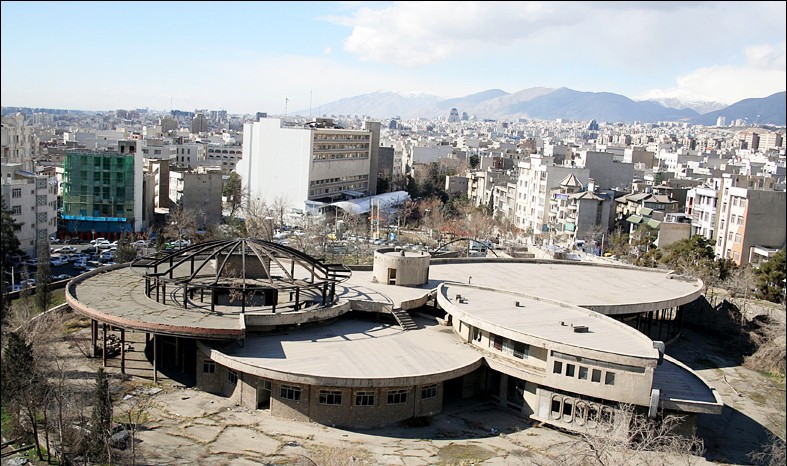
Khoram Palace is one of the most abandoned palaces in Tehran. This stone palace, which is currently located in the city of Ara, was built during the reign of Pahlavi II as a gift to the crown prince. During the revolution, this palace was a headquarters for Islamic propaganda and speeches. Unfortunately, the stone palace with all its glory has been abandoned.
14. Hossein Khodad Palace (Time Museum)

Hossein Khodad was one of the important Iranian craftsmen who built this palace for himself during the Qajar era. His interest in Iranian art and design made him seek help from the greatest masters for the construction of the palace and its plastering, it is interesting to know that it took 12 years to complete the plastering of the building.
Hossein Khodad did not live in this palace for more than one year and after the revolution, this building was taken over by Mustafafan Foundation. This palace has now been converted into a time watch museum or watch museum and is open for everyone to visit.
The Museum of Time is a collection of mechanical, pocket watches and time measuring instruments, which will definitely be an amazing experience for you to visit. In the museum area, there are also the first clocks, such as sand, sun, blue or fuel clocks.
- Address: No. 12, corner of Parzin Baghdadi intersection, at the beginning of Sarlashkar Fallahi (Zaafraniyeh) St., Valiasr St., Tehran
15. Masoudieh mansion from the palaces of Tehran

Masoudiyeh mansion is one of the palaces of Tehran, which was built during the Qajar era by the order of Masoud Mirza or Zalul Sultan. The reason for its name was the same. This mansion is made up of different parts, such as Diwankhaneh mansion, dining room mansion, backyard, backyard mansion, etc. Masoudieh Mansion is the best library and national museum of Iran.
- Address: Tehran, Baharestan square, southwest side, Ekbatan St
16. Bagh Firdaus Building

Ferdows Garden Mansion was built near Tajrish by the order of Mohammad Shah Qajar, which was left half-finished after his death. Over the years, many things happened to this mansion and it changed hands. The mansion was finally turned into a cinema museum, and Professor Ezzatullah Tazami was the first director of the Iranian Cinema Museum. The possibility of visiting the garden of this mansion with the sound of water flowing from its narrow pond is a unique experience of visiting Tehran palaces.
Final Words
In conclusion, exploring the top palaces in Tehran is an extraordinary journey into the rich history and captivating architecture of Iran. These magnificent structures, such as Golestan Palace, Saadabad Palace, and Niavaran Palace, offer a glimpse into the opulent lives of Persian royalty. Whether you are a history enthusiast, an architecture lover, or simply a curious traveler, visiting these palaces is a must-do experience. So, plan your trip to Tehran and immerse yourself in the grandeur and splendor of these remarkable palaces.
